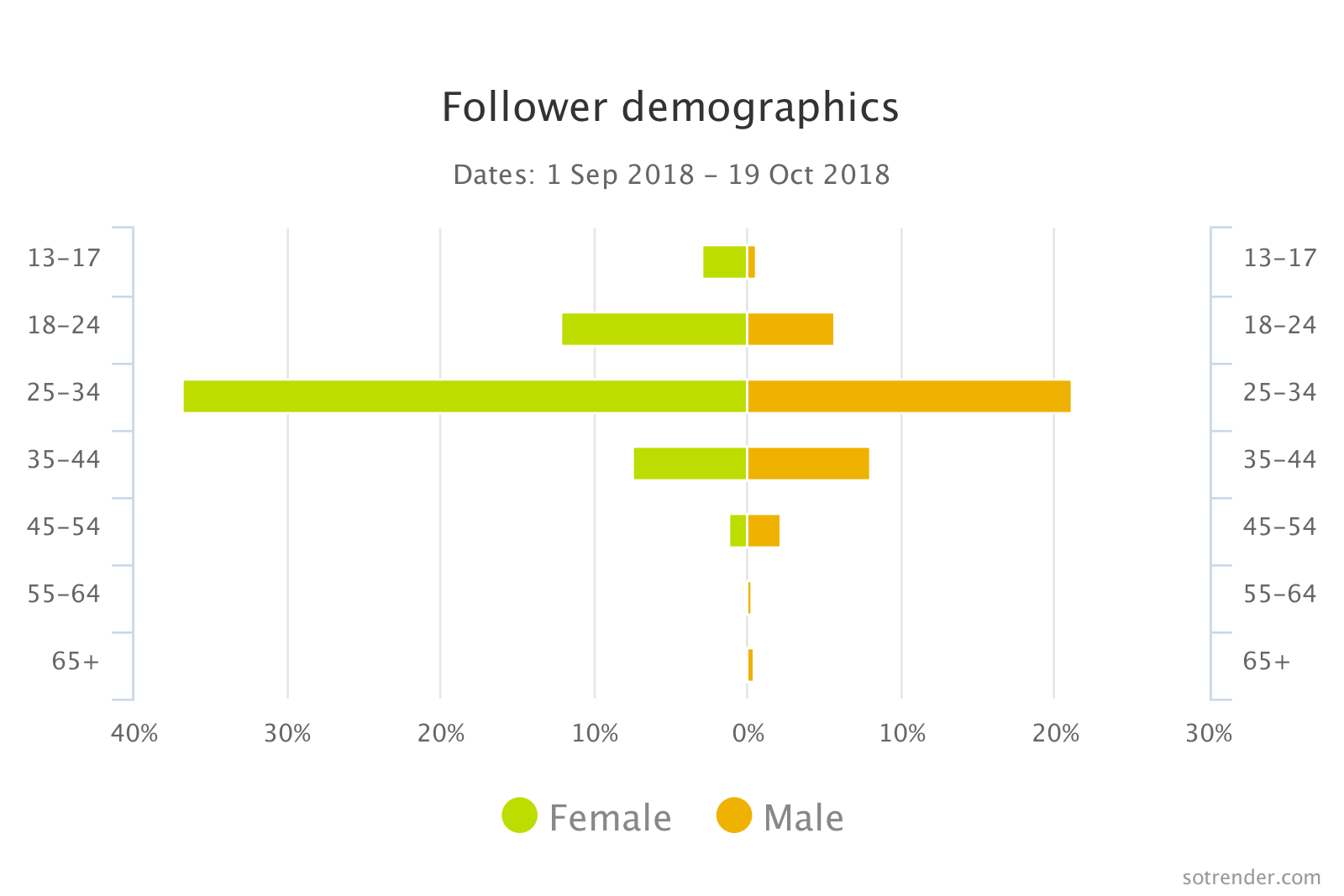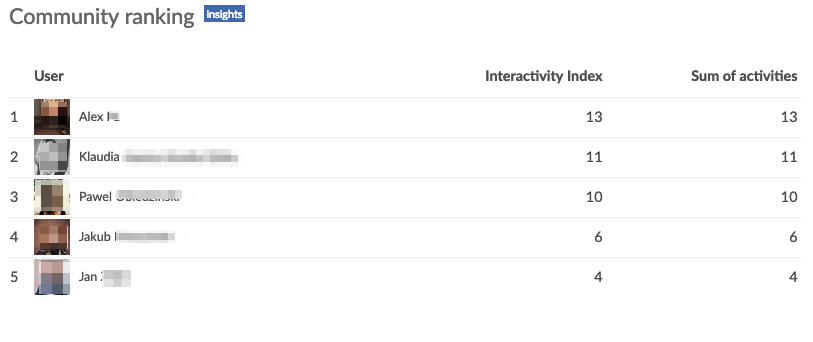If you are an entrepreneur, personal branding is right for you. It is a marketing tool that allows you not only to build a real bond of trust with customers but also to differentiate yourself from competitors. Social media platforms are one of the best ways to build one. As they represent a huge potential for the company to increase its reputation, its traffic, to get new prospects and customers. But it is a double-edged sword that can harm if it is misused.
Social media branding: What are the most common mistakes?
Mistake #1: Start without any strategy or understanding what you do and why
You can not tell everything, everyone, as it would have no sense. It is important to set the target audience you work with. And then to show that you are also a person who has interests, problems, and solutions for them. In other words, you need to have a clear understanding of who you are writing and how you can help them. At this step, you build an emotional connection with your potential customers.
Mistake #2: Incomplete description
If your goal is to gain notoriety or traffic, it’s important for people to understand who you are and what’s your point. This involves including a profile image, a way to contact you. The more complete your profile, the better! Your biography should not look like the list of what you sell, but rather have good reasons to follow your page.
Mistake #3: Publish rinky-dink content
There is a lot of people publishing cut-and-dried content on their pages. Showing the same types of content over and over again can make your page look boring, unpromising, or even irrelevant. Instead of posting the same link or quote, change things by displaying a wider variety of content. For example, share your positive/negative experience or your thoughts. But notice that you should not muddle up personal and professional. It takes time, but it’s also the best way to test what works with your audience and what makes you more interactive.
Mistake #4: Post constant promotion
Social networks are not an advertising channel. Or in any case, they are not only for that aim! If your post is 100% dedicated to the promotion, your audience will get tired and leave. The strength of social networks is in interactivity with customers. Invite them, ask them about their tastes and desires. Your relationship between your customers and your brand has to go far beyond just buying a product. It is at this price that you will build a true brand image.
Mistake #5: Do not answer questions, comments, criticisms
This type of negligence could be loss-making: you can even lose customers. Many people are now going through networks for technical support. And they will be very unhappy not to find help. It is important to answer anyway, to explain a minimum.
As a result of using social media in the right way, you will show the human side of your company. And this is important. Because people find it easier to turn to the person who trusts them and with whom they have an emotional connection. Besides, target customers will identify you with the personal brand. Thus use the services or products of your company.

Best practices for social media branding
As far as social networks are an integral part of our lives, they play an important role in our development. A company has many ways to promote its values to a wide audience. Social networks are among those that convey information quickly and efficiently. Indeed, companies have their account on social networks: Facebook, Twitter, Instagram or LinkedIn.
Here are 10 things every business should know:
#1 Analyze your audience
While social media facilitates dialogue with the audience, it is the key to understanding its needs. To get the most out of social networks, start by focusing on your target audience.
- Who are they? Gender, local origin, trades.
- What need does your product or service meet for them? Identify at least 3 relevant to your audience topics.
- Why spend time online, on which social networks?
When posting on your social media channels, consider who you are talking to.

Analyze followers’ demographic, for example in the Sotrender app
#2 Choose The Right Networks: Be Where Your Audience Is
Your target audience may be large depending on the products or services you offer.
Of course, every social network has the same goal: to communicate. But some of them are more suitable than others. For example, Pinterest is perfect for arts and crafts; Facebook for showcasing your activities; Instagram for the best photos of your events; Twitter for your news and Linkedin for your recruitments or pros tips.
Note: it is useless to share the same information on all the channels.
#3 Determine your Mission, Vision and Brand Values
Mission, vision, and values are the pillars of any strategic planning. Studies on the subject tend to show that companies that spend time on this “essential trio” succeed better. This is the step towards effective internal communication. In brief, you should:
- define your values: you must have other goals than making profits. Make a list of the core values your brand can offer and think about how to relate them to your voice
- develop your story and vision: people love beautiful stories. Building your brand identity around a story will help interact with your audience. It’s not about creative writing. Describe it so clearly that future customers will be able to understand what you expect from them.
#4 Don’t Overlook Visual Branding
Want to look professional, creative or dynamic? Enhance this by creating quality visuals. The choice of colors, fonts, shapes, and photos, nothing should be left to chance. If you do not have one of the elements, you can always create. For this purpose, you can call a group of designers or make it by yourself. For example, there are lots of free online logo generators like ZenBusiness where you can create an image of your company in a few minutes. This set of elements plays a crucial role in the perception of your company with your target customers.
Your presence on social media should be a direct representation of who you are. Keep a kissing-kin visual identity on all social media. A strong brand makes it easy for your followers to recognize your business. To be effective, respect the image formats and the lengths of texts specific to each social network.

#5 Develop Brand Voice and Tone
The branding goes so far beyond a neat profile, a nice logo, and a nice profile picture. It also depends on how you use the words. When you meet someone for the first time, you may learn a lot more about him from the way he talks. So, whether it is an update of a status, a tweet or an article, try to maintain a specific and recognizable tone. You can not imagine that a professional brand sends emails that greet customers with “Hey, what’s up?” Similarly, you can not build a fun, casual and friendly identity by using a tone too much formal.
If you are unsure of the tone that suits your brand, write examples of tweets, emails or messages. Adjust them until you get what you think is right in everyday life.
#6 Be Consistent With Your Topics
The first impression must be good. Whether on Linkedin, Twitter, Facebook, take the time to check and reread the texts you publish. Nothing is worse than inconsistency! You should be clear with what you think and what you say and know how to hold the same speech on different platforms. Being coherent means translating the same identity and behavior. You can not afford to miss this quality with the monitoring that is exercised on social networks. Being consistent with the information you publish is appreciated by the people. If they like the information you’re showing, they’ll regularly check for updates to your profile.
#7 Post Regularly
For your social media presence to be effective, you need to regularly post content. This increases your chances of being seen by followers, as well as your chances of getting new likes. Of course, we all know how complicated it can be, when we are caught up in our work, to post frequently. So do not forget, think about developing a monthly calendar of publications to be held. You can even set a day or two during which you write all your publications. After that plan them on the agreed day (there are, in fact, tools that allow you to schedule your publications).

#8 Connect With Influencers
On blogs, YouTube, Instagram … influencers are everywhere. Social networks have the particularity of broadcasting content quickly and easily. Instagram still remains the most widely used by media influencers. This seems logical: a photo or a short video has a lot of impact for a fashion and beauty blogger for example. Notice that good influencers are those who are in phase – as well as their followers – with your brand and its values. Focus on the most relevant and not the ones with the highest audience.
#9 Promote Your Profiles
Paid ads on social media are not different from regular ads. It’s always about targeting a specific segment via messaging. The only difference is that you can use the data collected on social media to build 100% personalized target audiences.
Take some time to examine each platform in detail. They all work in a different way, and their costs are different. In any case, they are an excellent approach to attract the attention of a new audience.
#10 Turn Loyal Customers into Brand Advocates
As you know, the customer is at the heart of your business. Without him, your business would not exist. To satisfy him is, therefore, the least thing; exceed his expectations is better. From social media messages to traditional word of mouth, happy customers can quickly become true brand ambassadors. Needless to say, these customers are critical to the success of the business and, properly engaged, they can play a key role in future growth and create great customer experiences. But like any customer, these fans need recognition and ongoing commitment to cultivating their advocacy.

With the Community ranking in Sotrender, you can find your brand advocates
Conclusion
Personal branding allows you to appear when your contact needs you. And that makes all the difference. Building it is not a sprint. This is not done in a day. Do not aim for perfection from the beginning. Instead, let your brand evolve over time and focus on the value of the content you deliver to your target audience.
Finally, take care of this image at all times. Your personal marketing is not what you say about yourself. Your personal brand, your reputation, is especially what others say about you when you’re not here!








